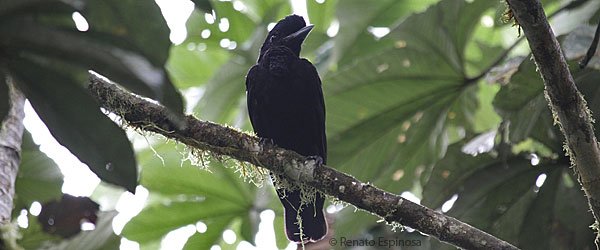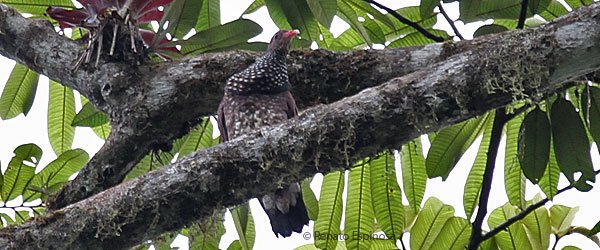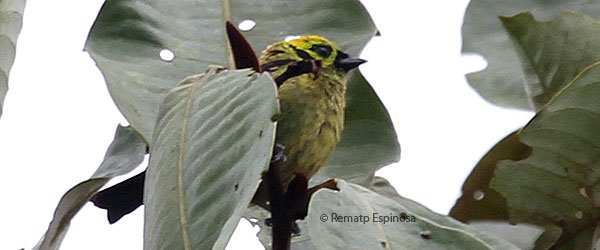On our lowland birdwatching trip we visited Rio Canande Reserve, Botrosa Road and then we also visited the nearby reserve of Mache Chindul; specifically we went to Bilsa Research Station of Jatunsacha Fundation. Jatunsacha purchased the land it currently protects in 1994 and the government declared it an Ecological Reserve in 1996 due to it large biodiversity and high degree of endemism.
The Mache Chindul Reserve is located in the province of Esmeraldas and runs north-south parallel to the coast. It is part of the Tumbes-Choco-Magdalena Hotspot region rated as one of the highest bio-regions in the world. It receives great quantities of humidity from the ocean which makes it a very wet mountain range. It is made up of 120,000 hectares of wet (and dry) Tropical rainforest ranging in altitude from 200 m.a.s.l. to 750 m.a.s.l. Its rainfall varies from north to south, having the most rain 3,000 mm near the northern section near Bilsa and the least near Pedernales of 1,500 mm.
The most sought after bird in the Bilsa Research station is the Banded Ground-Cuckoo which was the focus of a research project in which this bird had a radio installed and later successfully nested and produced chicks. Our guide Jorge Olivo recalls the saddest-and-happiest moments of this project when he saw the chicks leave the nest to make a life of their own. Although we did not hear or see this bird we saw many other great birds that live in this marvelous reserve.
To arrive at the Bilsa Research Station during the rainy season we rode on mud-threading mules for 3 hours. As we waded west toward the station we saw many signs that showed the limits of the Mache-Chindul Reserve. At first it did not bother me but soon I realized that the forest was missing as far as I could see on both sides of the posted reserve signs. I asked our mule owners about this issue and they explained that 100% of the reserve is owned by the people that live inside the reserve! Then I realized that this reserve is really not a reserve, and that its forest are highly fragmented to give way to farming.
Upon further research in the Management Plan for this reserve by the Ministry of Ambient the declaration of this reserve had the intention to stop the destruction of the forest and to find some sustainable means for all these people to live in harmony with the reserve.
On our way in we saw more poverty and the struggles of the small farmers that cannot make ends meet with marginal production of low tech agriculture. Whatever they manage to produce it was necessary to take it many hours by mule to the closest town of La Y where the low prices paid by the buyers sent them home on a long mule ride with little money and no hopes for a better life.
Today I reflect upon this birdwatching trip and wonder why is there so much poverty in one place and so much richness in others with similar soils? I remember the beautiful Botrosa forest and question why the people of Mache-Chindul could not benefit from sustainable forestry management? I think that governments have the responsibility to guide our people and resources for a sustainable future. Utopia would be to manage these resources to give employment and profits for the more than 6000 people that currently reside in this forest. This could even be a politically correct project..















Thanks for reporting on Bilsa Renato! I havent made it there yet because I didnt want to do that long trek through the mud. Thanks also for giving an account of the reality of many reserves like Mache Chindul and the need to help people who reside there live in a more sustainable manner with their surroundings. We all need to do that no matter where we livem but the need is perhaps greater in places set aside to be biological reserves.
Pat: Bilsa is worth it. But of course you can go in during the summer and avoid the torturous mud.